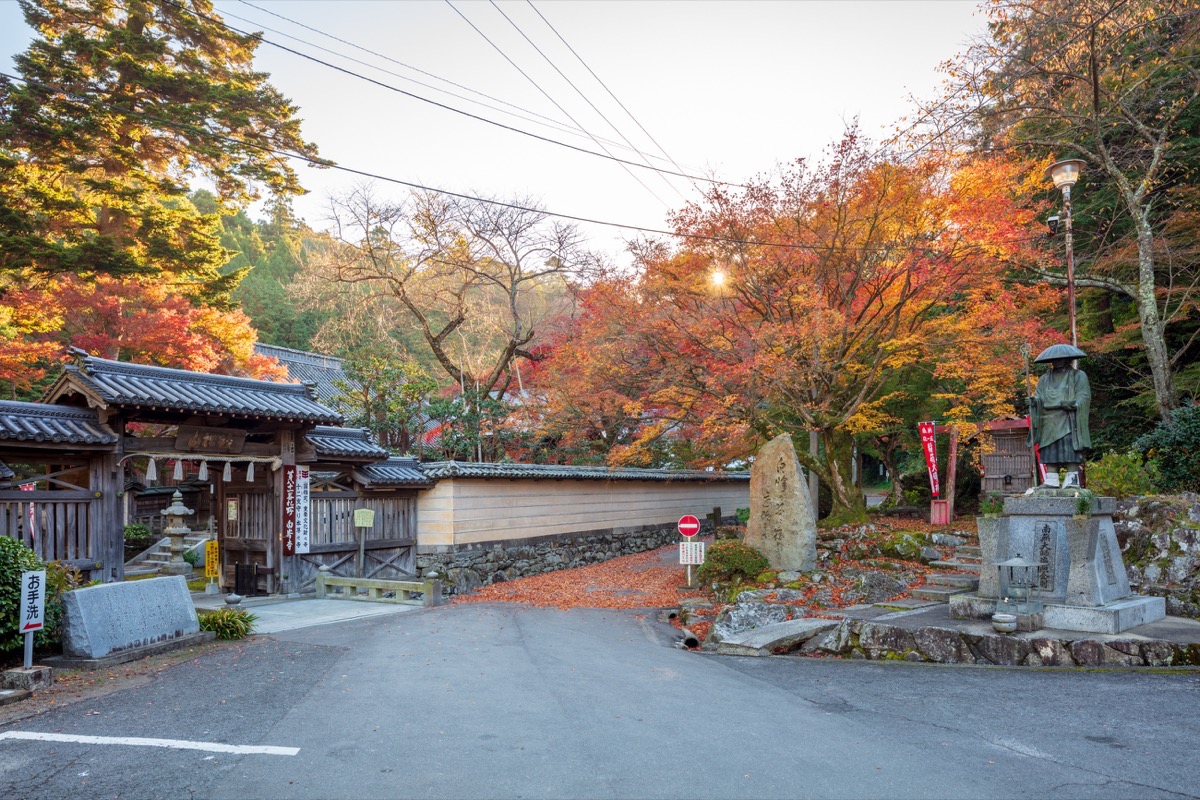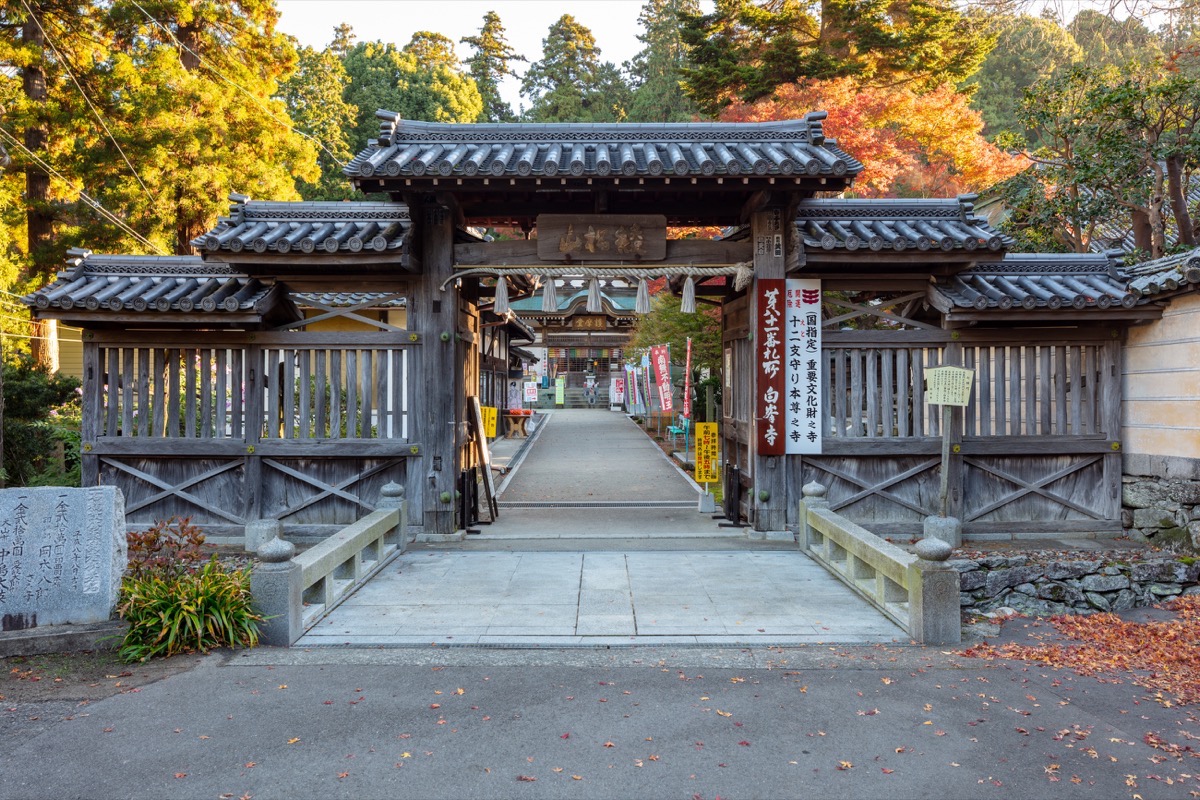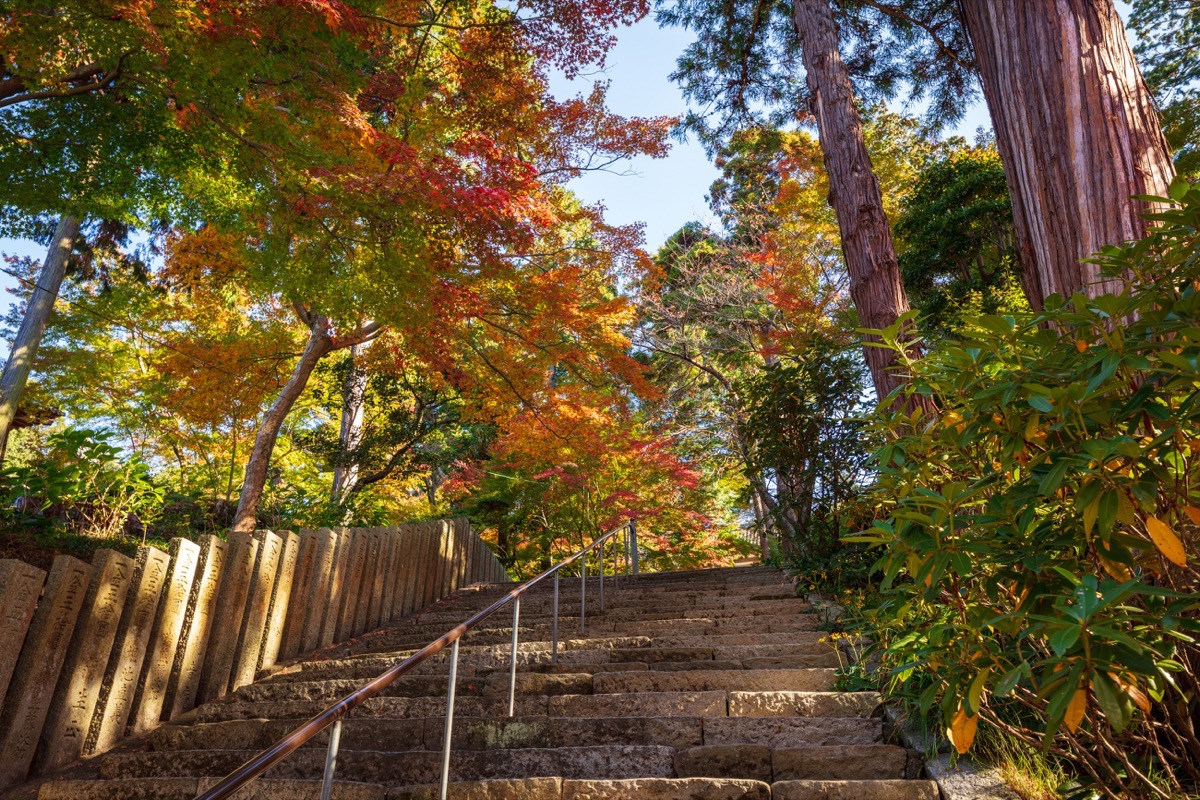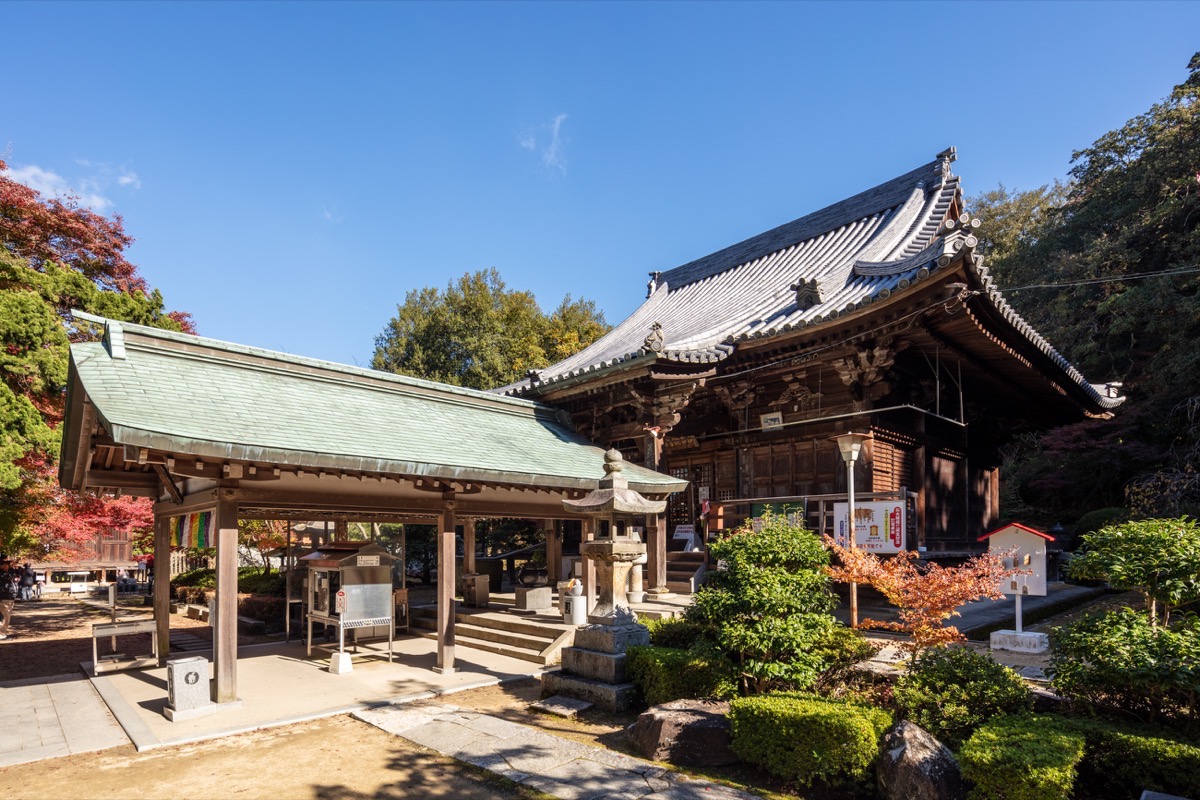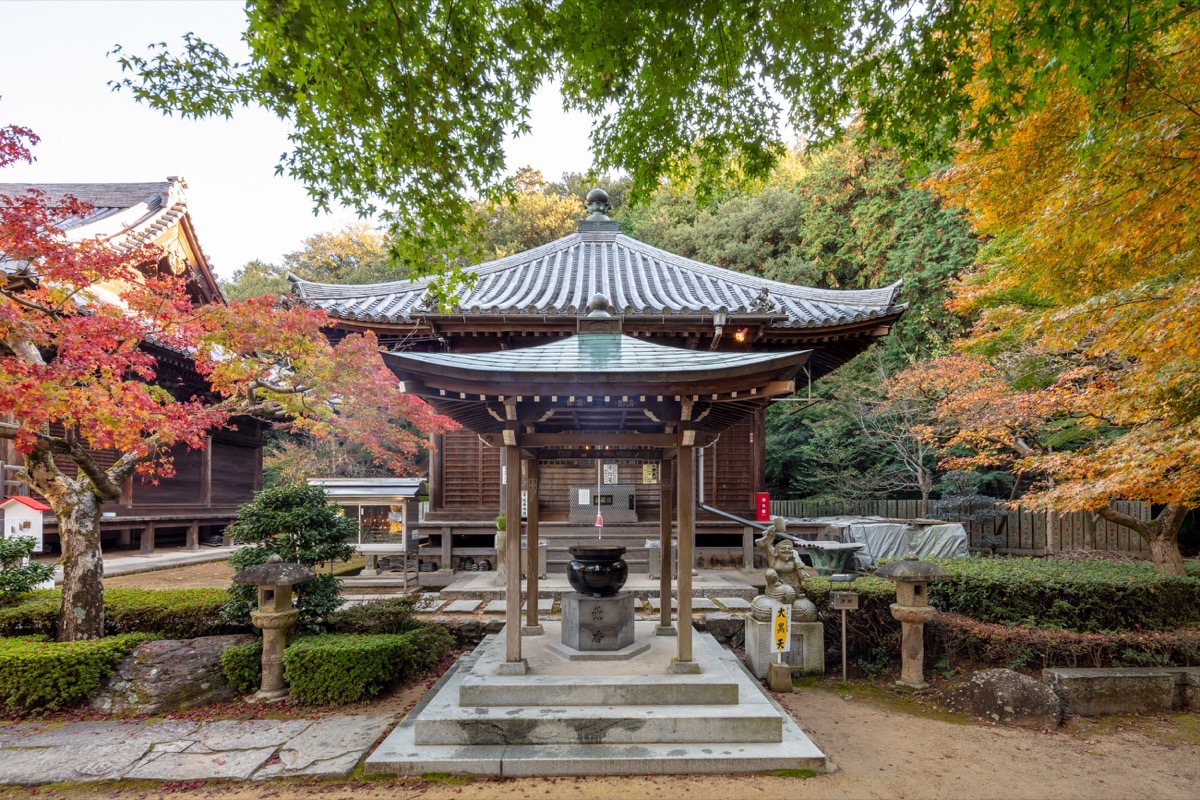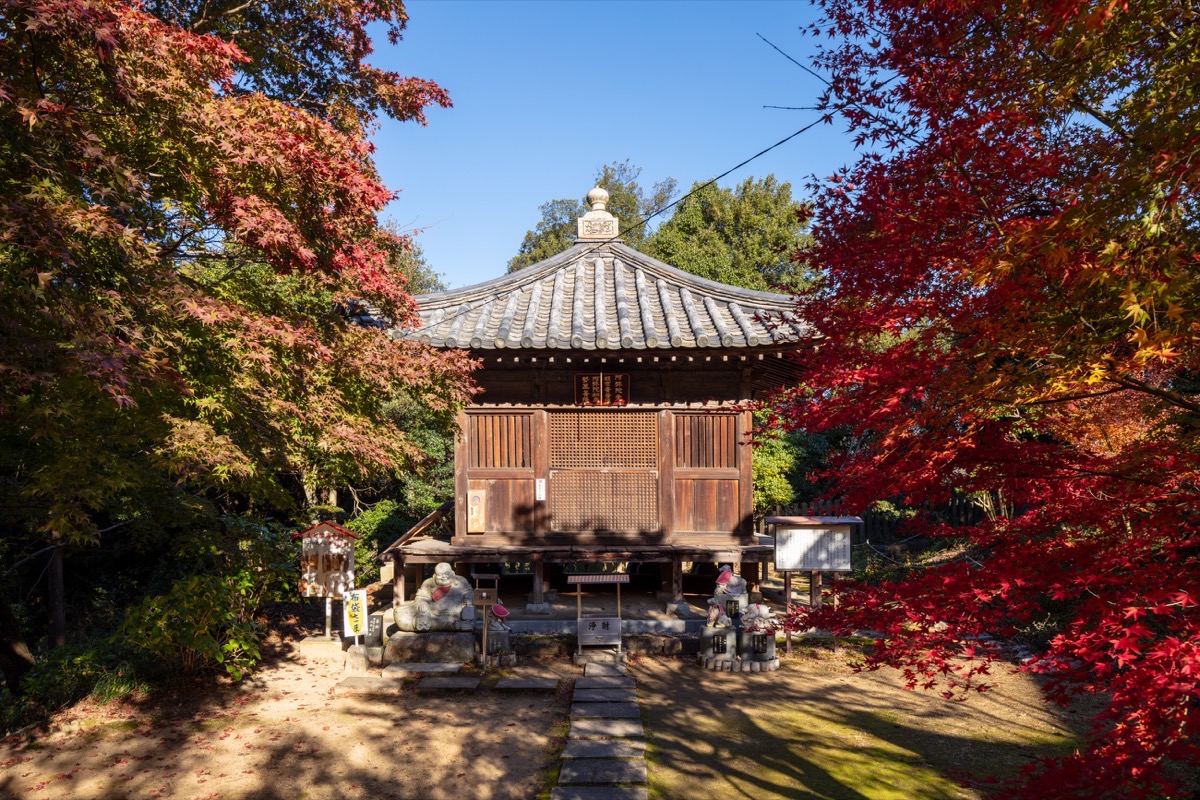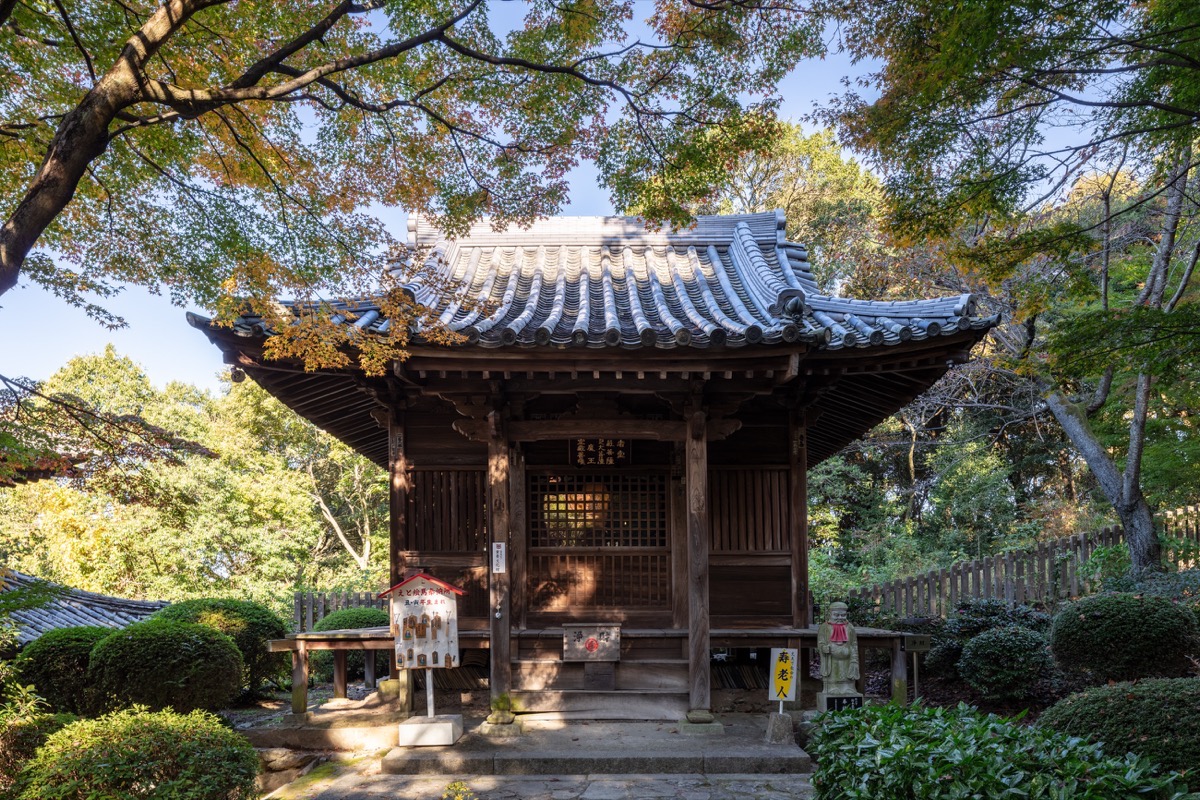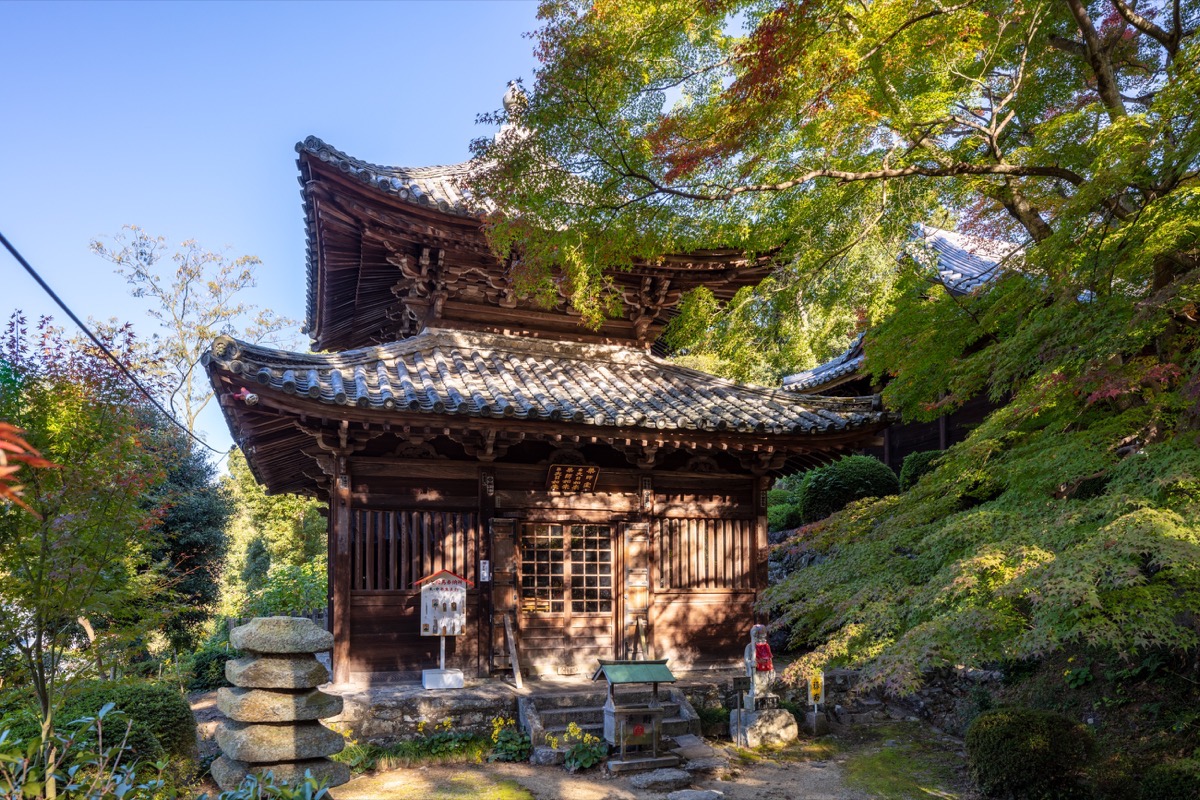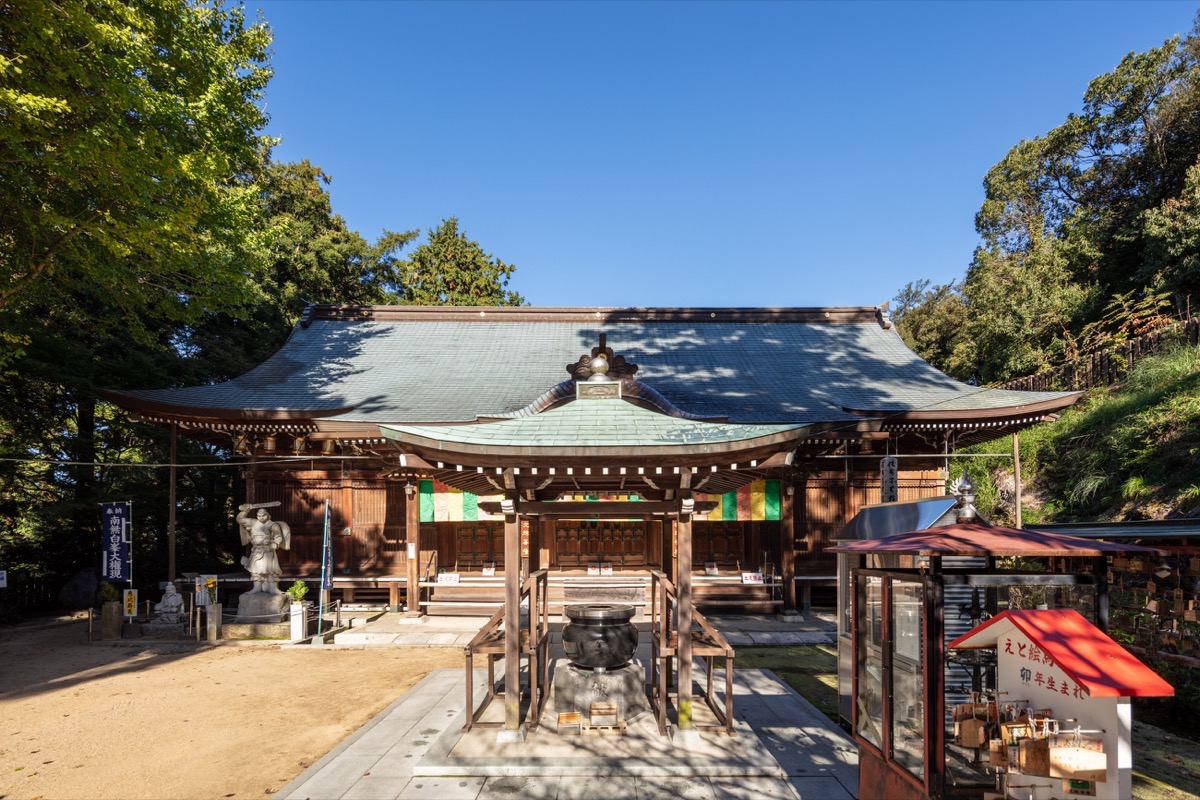Shiromineji TempleThe 81st Temple Shiromineji Temple
| District | Shikoku Henro pilgrimage | Period | ー |
|---|---|---|---|
| Set Content/Set Date | |||
| Owner | Shiromineji Temple | Location | 2635 Omicho, Sakaide, Kagawa |
Located midway up Mt. Shiromine west of Goshikidai Highlands is Shiromineji Temple, the 81st sacred spot along the Shikoku Henro pilgrimage. Shiromineji is known as a foundational temple of both Kobo Daishi (Kukai) of the Shingon Sect and Chisho Daishi Enjin of the Tendai Sect. According to writings documenting the temple’s origins and history, Shiromineji Temple started in 815 (Konin 6), when Kobo Daishi (Kukai) buried the sacred wish-fulfilling gem on top of Mt. Shiromine and dug up a holy water well, praying to save all living creatures from suffering.
Afterwards, a sacred tree appearing in the Seto Inland Sea started to shine, guiding Chisho Daishi Enjin up Mt. Shiramine. When he searched the mountains, he listened to the oracle of a white-haired old man that appeared, pulled up the tree, and carved an image of the Senju Kannon Bosatsu (Thousand-Armed Kannon), and enshrined it at Shiramineji Temple.
As this temple was built to protect the imperial tomb of Emperor Sutoku, whose life ended in the Hogen Rebellion, it received much devotion from generations of emperors, officials, and feudal lords, who offered a variety of treasures. In addition, Mt. Shiramine is said to be the home of Sagamibo, a tengu (long-nosed goblin) who has appeared in a wide variety of literary works, including the Noh song Matsuyama Tengu, written by Zeami at the start of Muromachi period, as well as Ugetsu Monogatari, written by Ueda Akinari in the Edo period.

